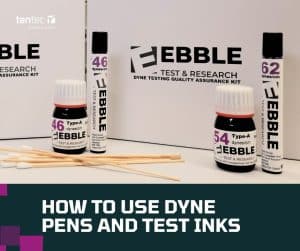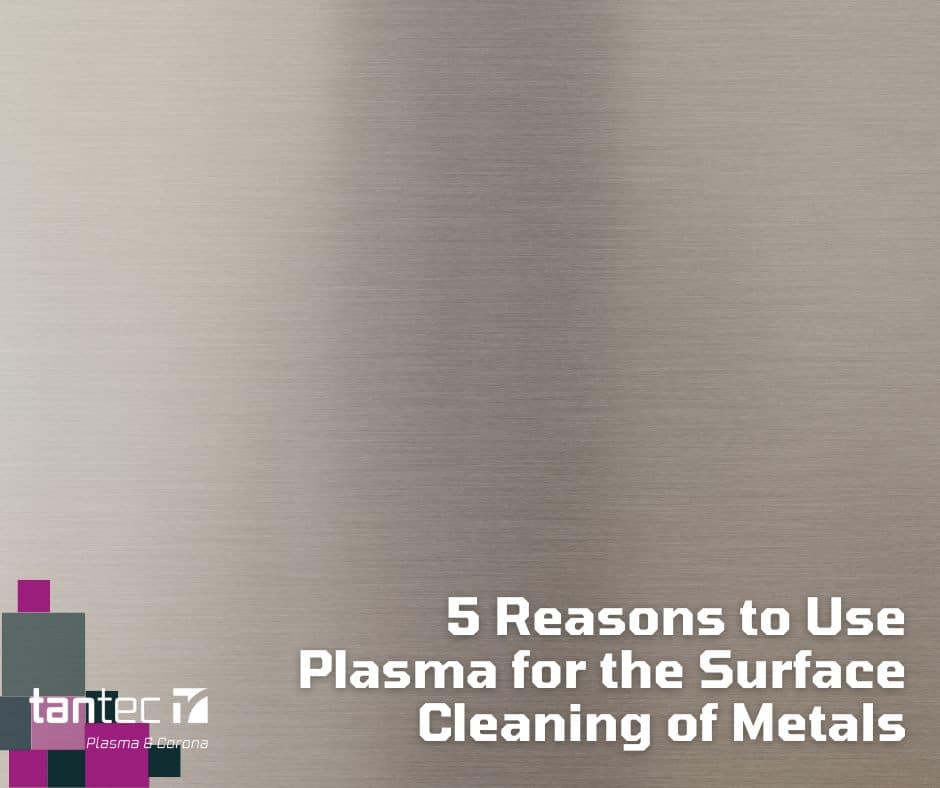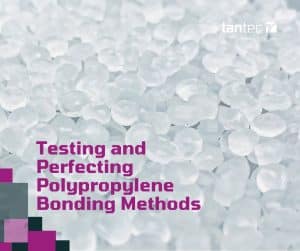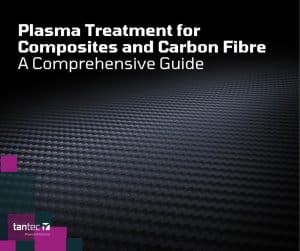
How to use Dyne Pens and Test Inks
Read this to find out the official way to get

Plasma surface cleaning using Atmospheric Plasma, Vacuum Plasma or even Corona, removes organic contaminants at a microscopic level and is typically used as a final, ultrafine cleaning process for applications requiring cleanliness at a molecular level.
Plasma cleaning is done using highly charged atoms, which are shot at the surface to vaporise contamination in a process that could be described as molecular shot blasting. The vaporised oils and greases from the surface are removed leaving a perfect surface.
Because it’s on a molecular level we’re working, plasma and corona treatments used for cleaning will only remove trace amounts of oil. If your part is dripping with oils, or heavily contaminated, a quick clean will be needed. Keep reading to find out Tantec UK & Ireland’s examples of why to use plasma cleaning.
Plasma is a highly controlled and repeatable process which provides a uniform treatment that can be target specific, or all over the part. Controlled with the onboard PLC or electrical controls, the systems perform consistently without requirement for replenishing chemicals or other consumables that might change performance.
Plasma is a clean, dry process generating only low volumes of non-toxic gases which can be easily filtered or safely vented to the atmosphere. There’s no need for additional process gases or chemicals, saving on storage and safe handling issues, as well as the requirement for disposal of chemicals which can be both costly and bad for the environment.
Plasma cleaning is a highly efficient yet gentle process involving no harsh chemicals, abrasive materials or extremes of temperature. Plasma cleans the surface of the substrate at a molecular level without affecting the bulk properties of the substrate making it suitable for even the most sensitive of substrates. As the plasma discharge is potential free, plasma can be safely used to clean sensitive electronic components ready for further processing.
Plasma cleaning offers fast processing times with a typical cycle time in the region of 1-2 minutes for all over treatment. No further steps such as rinsing, drying or curing are required. Plasma cleaning is a simple, single stage process and can be easily slotted into most production processes with both inline systems and batch systems available.
Plasma cleaning leaves a microscopically clean surface with no trace organic residue. Viewed under a microscope, the surface of even highly polished metals is highly textured with many peaks and troughs. Depending on the surface energy of the substrate, wet chemicals may not penetrate these imperfections leaving behind contamination which can adversely affect post treatment processes such as bonding or painting.
Plasma cleaning is able to penetrate even the smallest imperfections vaporising organic contamination and leaving behind a truly cleaned surface.
Plasma cleaning is an excellent way to be sure that you have a surface that’s ready for further processing. It will assist and improve adhesion of inks, coatings and adhesives while at the same time use minimal energy and need no additional resources.
Plasma cleaning is a powerful tool, but its restriction is the level of contamination. Heavy, dripping or baked on oils will be too much for the process and an initial clean should be done. Using plasma alongside a cleaning process such as ultrasonic cleaning or aqueous wash systems is often sensible as this will give a consistent quality going into the plasma chamber.
This technique is often used alongside machine shops and tooling centres, where cutting fluids are dripping from parts as they leave their manufacturing process. Cleaning using a liquid cleaning process may take many minutes or even hours to get a perfect result, but coupled with plasma the process can be 5 minutes aqueous washing with a 2 minute plasma clean.
The resulting part will be as clean, or even better and the amount of time, energy and consumables saved is significant. The combination of the two processes also gives both their best chance to clean anything and everything.
Other techniques such as abrasion are sometimes coupled with plasma, however, you do need to make sure the dust and residue from abrasion is physically removed to ensure a perfect finish.
To keep up to date with all of Tantec’s latest news and articles, follow us on LinkedIn.

Read this to find out the official way to get

Polypropylene (PP) bonding is traditionally a difficult task due to

Composites are becoming increasingly important in manufacturing, whether these are
40A Crossgate Road
Park Farm Industrial Estate
Redditch
B98 7SN
Tel: 01527 304 004
Email: info@tantec-uk.com
